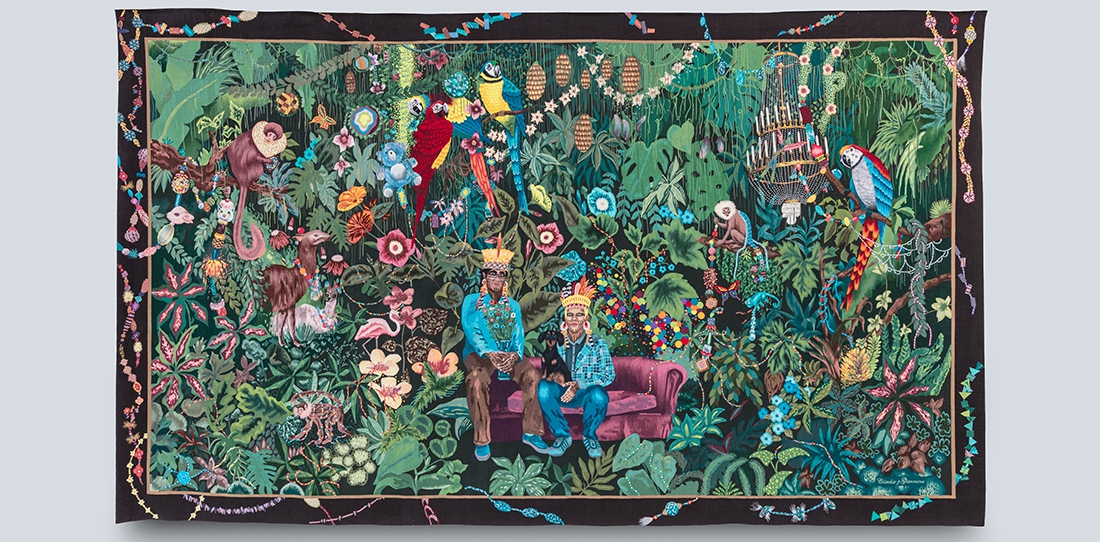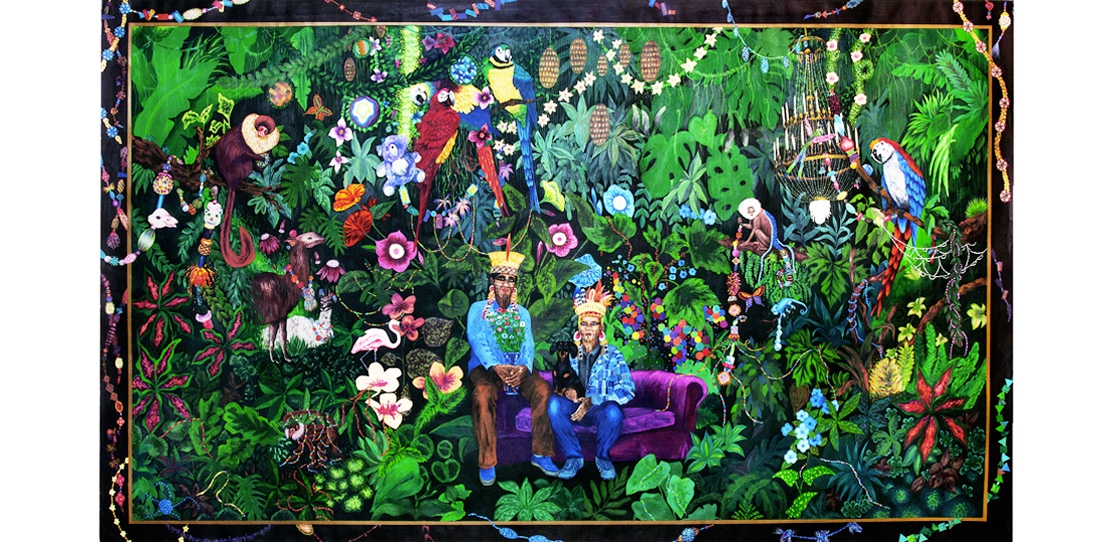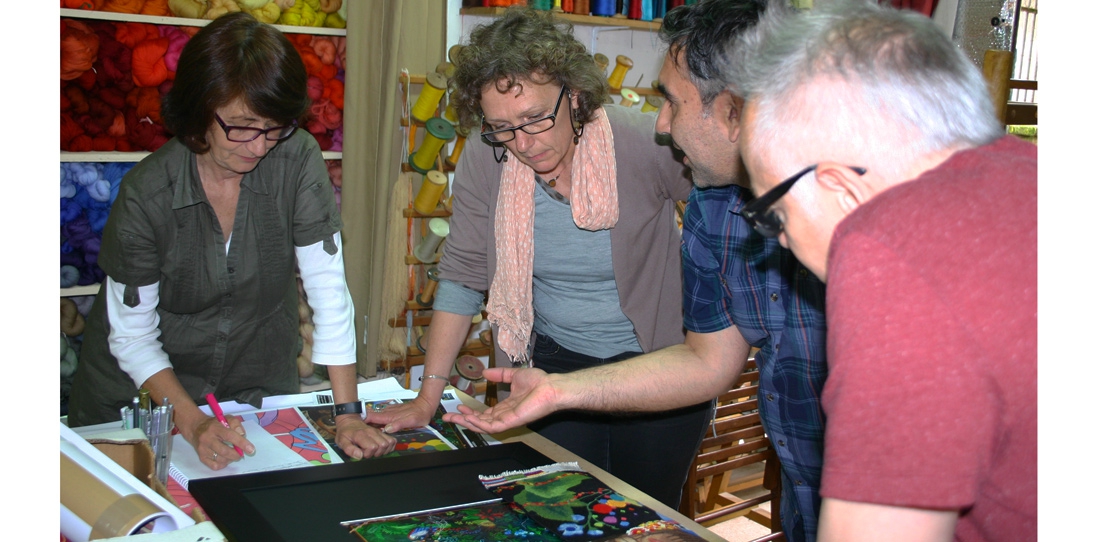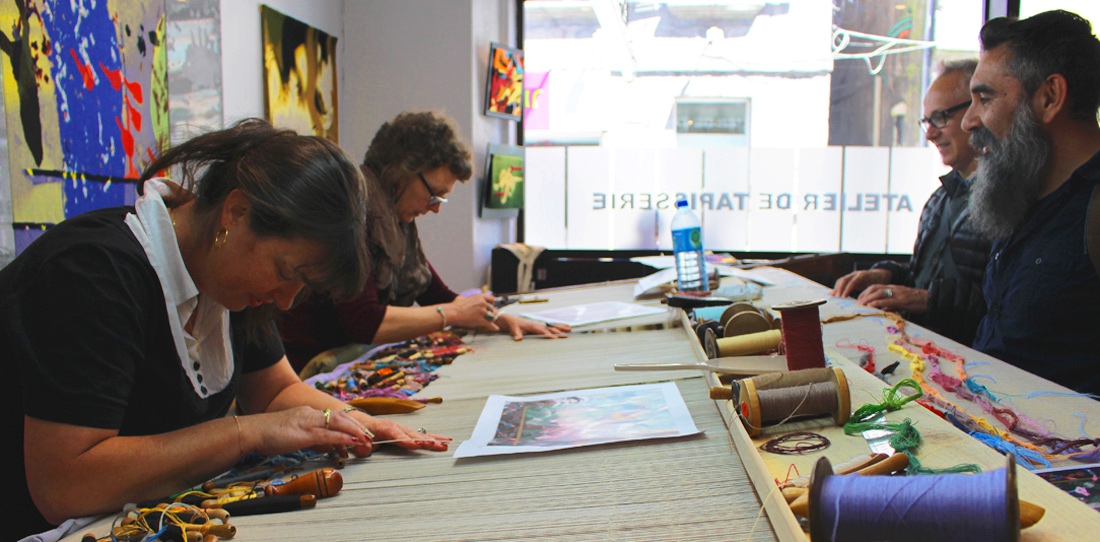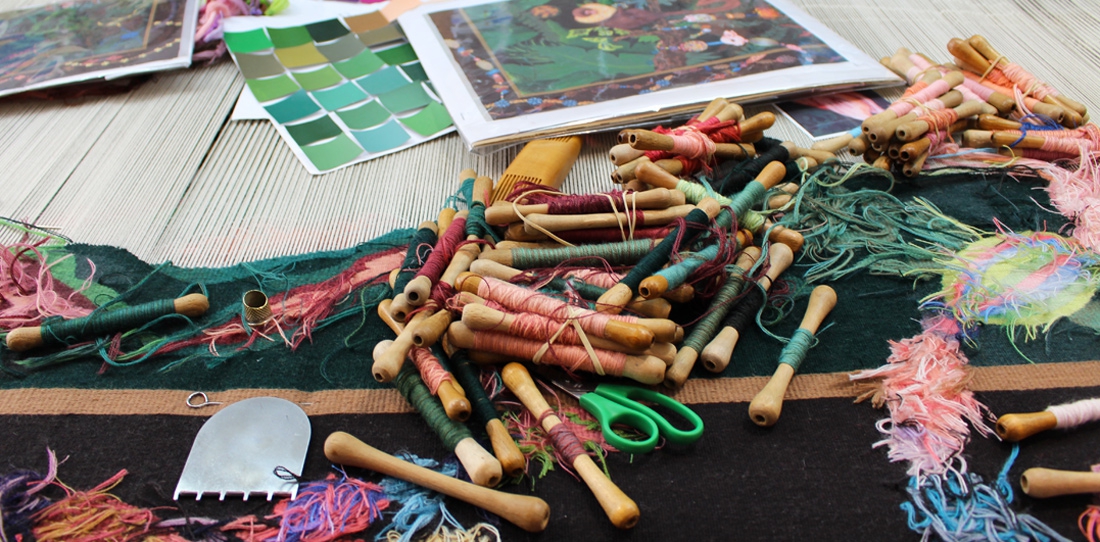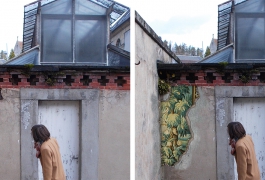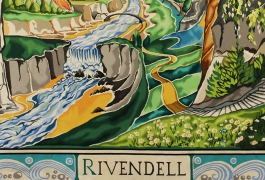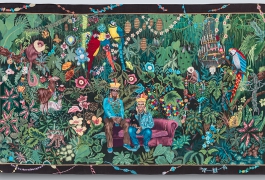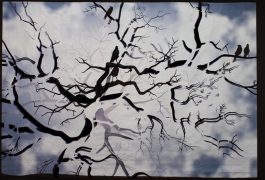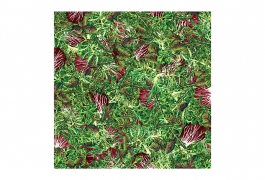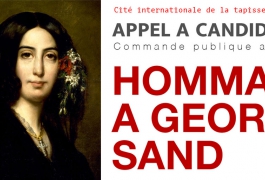La famille dans la joyeuse verdure (The family in the happy greenery)
Leo Chiachio and Daniel Giannone, 2nd Prize – 2013 call for contemporary creation
Dimension of the project: 3 m x 5 m
Like the Great Prize, the second prize 2013 was won by a duo of artists, Argentinians this time. Their project is a jubilatory painting, inspired by the Latin-American imaginary – notably guarani – of the forest and stamped with a magical realism in the style of the Argentinean Julio Cortazar’s or the Colombian Gabriel Garcia Marquez’s literary works.
In Leo Chiachio’s and Daniel Giannone’s painting, nature appears luxuriant, made of an infinite wealth of colors, colors and materials. Sometimes, it even turns into sparkling jewelry. Nature is presented on a scale which is higher than the human figures to underline how it is essential to protect it. The Aubusson tapestry was traditionally conceived as a form of remembrance, story of great epics. In that, Chiachio’s and Giannone’s work is a token of the contemporary emergency of the protection of this nature.
As in each of their work, the two artists represent themselves in the center. Presented with masks and feathers from guarani inspiration, they are also accompanied by their dog Piolin to present a new familial pattern. It is about setting into the tapestry the changes which occurred in occidental societies regarding the new set-ups whose encounters today the familial institution.
La famille dans la joyeuse verdure follows perfectly the tradition and the history of the Aubusson greeneries. Indeed, it proposes to the spectator to sink into an immersive narrative universe tainted with fantastic elements. The central scene is placed within a greenery background, in which abound details both realistic and oneiric. The weaving of this great greenery scene was entrusted to the Atelier A2 in Aubusson. The monumental work was revealed to the public on Mai, 18th 2017. A small format version was woven by Patrick Guillot’s workshop in 2014.
Leo Chiachio and Daniel Giannone live and work in Buenos Aires. After a training at the Beaux-Arts, they decided to break their habits in their pictorial know-how and dedicate themselves to other techniques, notably the embroidery and the porcelain. In Argentina, they are represented by the gallery Ruth Benzacar and by the School Gallery in Paris.
----

